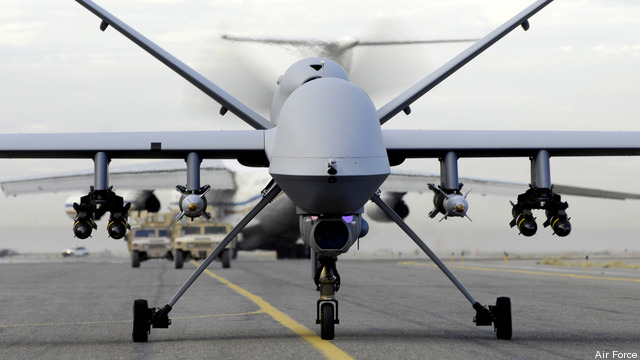UPDATED: Head of Air Force ISR, Lt. Gen. Otto, Says IG Info Out of Date
WASHINGTON: The Air Force planned to buy 401 Reaper drones for $76.8 billion but didn’t know why it was going to buy that many, the Pentagon’s Inspector General says in a new report.
“This occurred because Air Combat Command officials did not:
- follow the Joint Capabilities Integration Development System requirement to obtain Joint Requirements Oversight Council approval for an increase in procurement quantity; and
- conduct and maintain consistent, complete, and verifiable analyses for determining the necessary aircraft quantity.
“As a result,” the report’s summary says, “the Air Force risks spending approximately $8.8 billion to purchase, operate, and maintain 46 MQ-9 aircraft it may not need.”
Sadly for you and me, dear reader, the report is classified For Official Use Only, which means we only get to read a summary of the report.
UPDATE: The head of Air Force Intelligence, Surveillance and Reconnaissance, Lt. Gen. Bob Otto, told me Thursday afternoon that, “the data in the report is a year old.” Given the new, lower number of Reapers the service plans to buy, he says, “the Air Force is not at risk of exceeding the requirement.” UPDATE ENDS
The Air Force is not sitting on its hands. It agreed with the IG’s findings and is working to validate the number it will buy, according to the report summary. Air Combat Command started analyzing the number of Reapers it needs to buy in August 2014. And we have this statement from Lt. Col. Christopher Karns :
“The Air Force is reevaluating the numbers necessary to meet today’s requirements. We will continue to work with the Secretary of Defense and combatant commanders to ensure warfighter needs are
supported.”
By April last year, the Air Force had ordered 207 MQ-9 Reapers, including 58 added by Congress to accelerate fielding and General Atomics had delivered 109. In the fiscal 2015 budget the Air Force lowered its planned purchase from 401 to 346.
Now you may wonder how the program could get to this stage without having validated the requirement for the numbers ordered.
The Predator’s successor was initially managed as a Quick Reaction Capability program in reaction to the terror attacks of Sept. 11, 2001. Former Defense Secretary Robert Gates famously slammed the Air Force for moving too slowly to buy drones. His aggressive advocacy worked, but this may be one of the side effects. Also, there’s the truth that no rational person would ever want to have to comply with the Joint Capabilities Integration Development System (JCIDS), but it’s the rule.
UPDATE: Lt. Gen. Otto made clear the Air Force’s first job was to build and deliver planes to commanders who needed them. “The (JCIDS) process is important and we’re going to get that right, but it’s not more important than delivering the capabilities the (Defense) secretary demands,” he told me. UPDATE ENDS
Bear in mind that IG reports, while authoritative, share a weakness common to watchdog agencies: they are looking backwards and take time to produce those authoritative reports. That may explain why their number differs from the 2015 budget’s.
In a ‘world first,’ DARPA project demonstrates AI dogfighting in real jet
“The potential for machine learning in aviation, whether military or civil, is enormous,” said Air Force Col. James Valpiani. “And these fundamental questions of how do we do it, how do we do it safely, how do we train them, are the questions that we are trying to get after.”



























